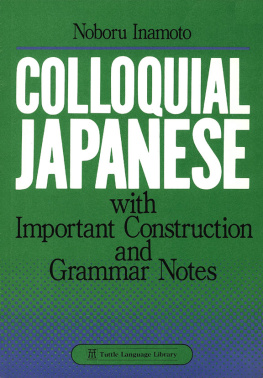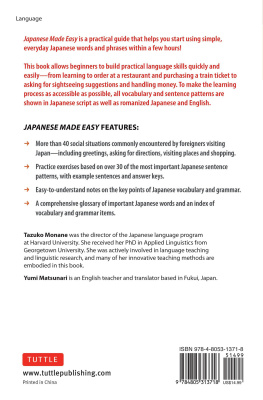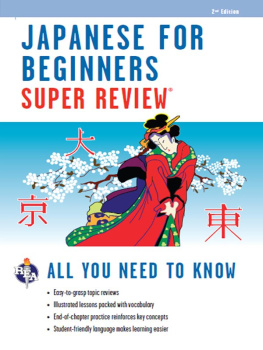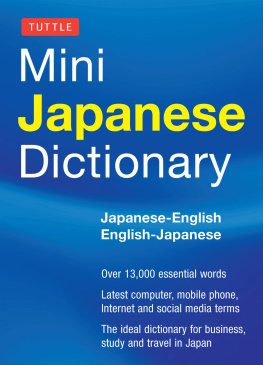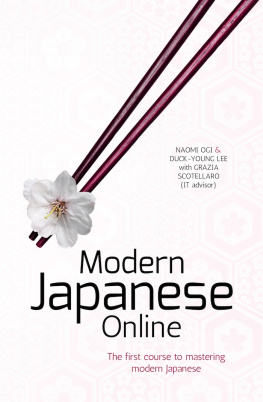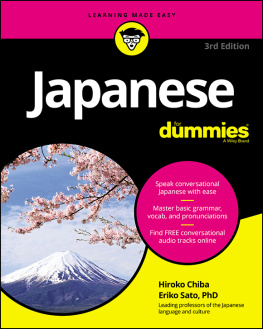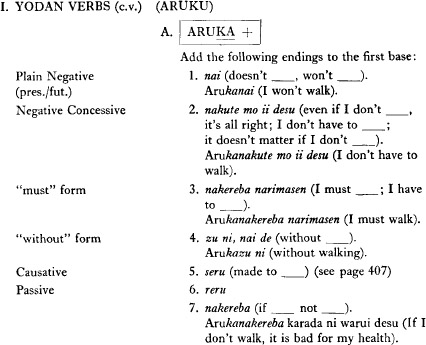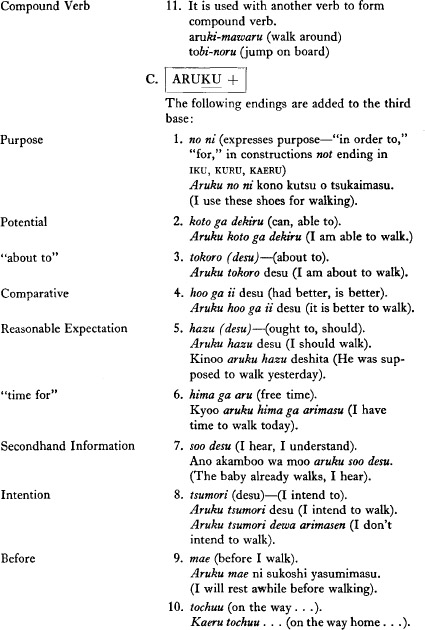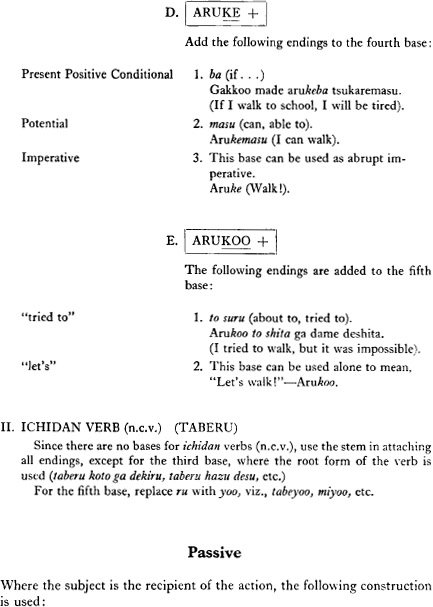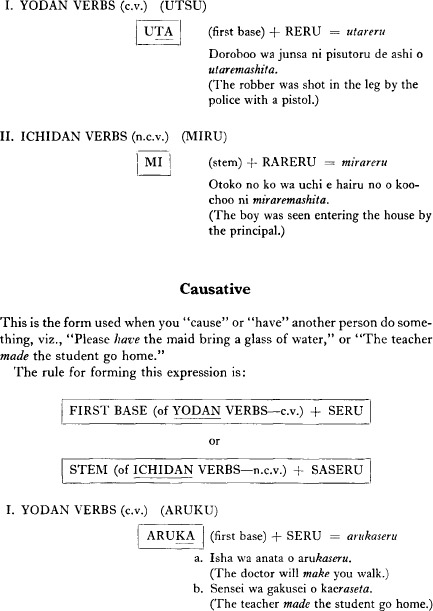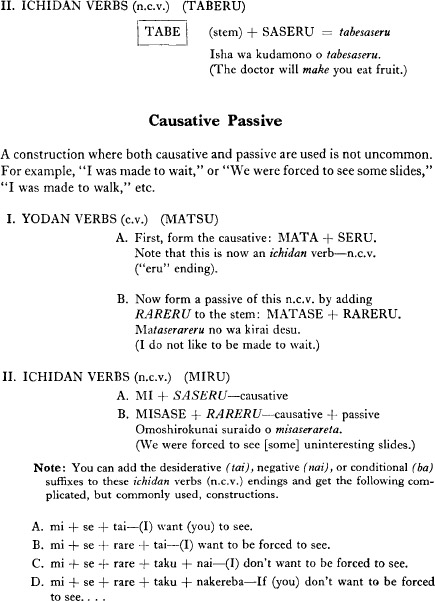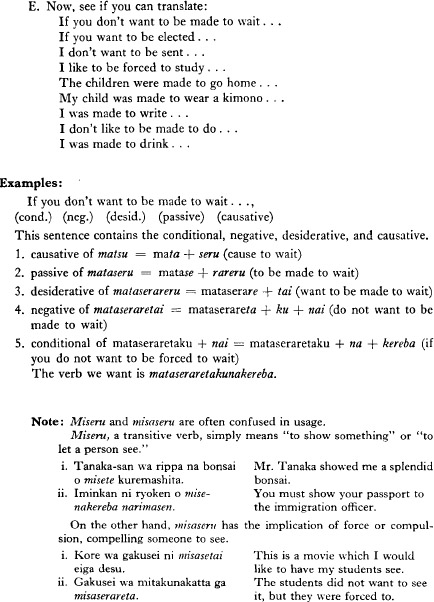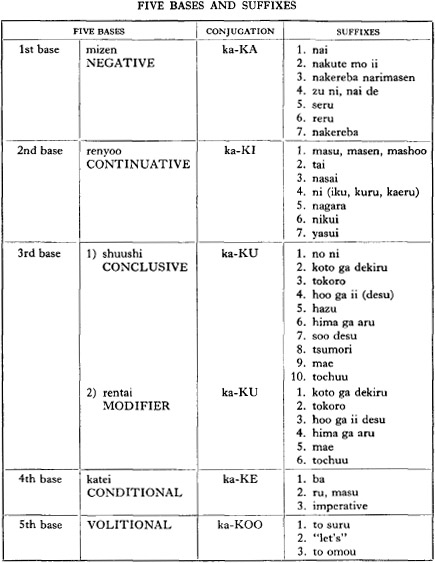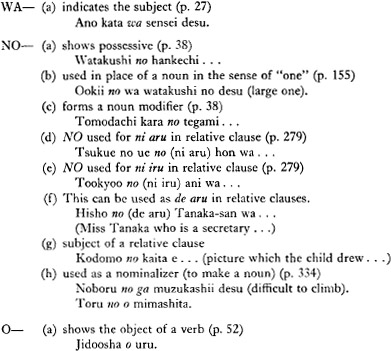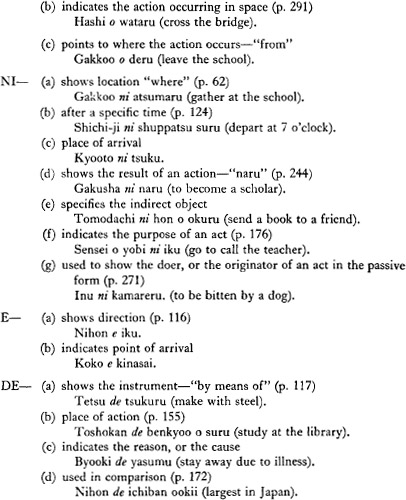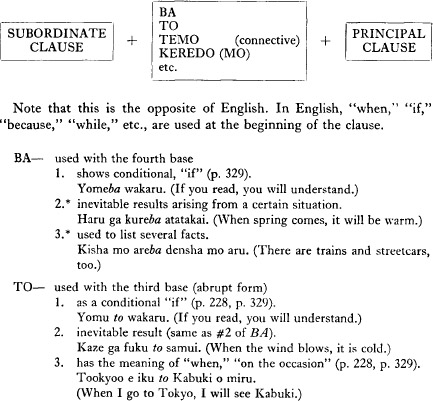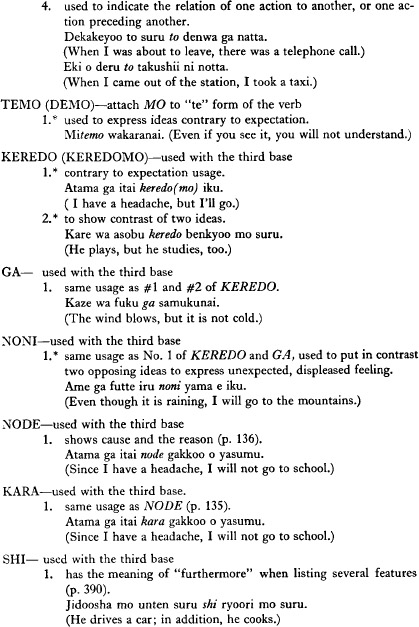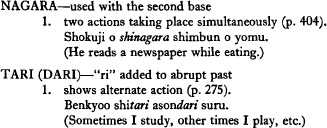ABBREVIATIONS AND NOTES
Following are some of the abbreviations used in this book:
adj.adjective
adj. pro.adjectival
pronoun adv.adverb
c.v.conjugating
verb Chi. v.Chinese verb
conj.conjunction
I.C. & G.N.Important Construction and Grammar Notes
idio.idiomatic expression
inter, adj.interrogative adjective
inter, pro.interrogative pronoun
inter, adj. pro.interrogative adjectival pronoun
interj.inteijection
n.noun
n.c.v.non-conjugating verb
nom. casenominative case
obj. caseobjective case
pol. pastpolite past
p.p.postposition
pro.pronoun
prog, formprogressive form
rel. cl.relative clause
suf.suffix
v.verb
v.i.verb intransitive
v.t.verb transitive
| Note: | 1. The italics in the text are used to indicate new constructions requiring special attention as they appear in each lesson. |
| 2. Hyphens are used in this book merely to indicate the combination of words, suffixes, prefixes, etc., for better analysis and understanding, and to clarify word structure. |
| 3. Capital letters are used at the beginning of the sentence and for proper nouns. |
4. English words now commonly accepted as Japanese have been used in this book in their Romanized forms, e.g., | takushii | (taxi) | | basu | (bus) | | hoteru | (hotel) | | bataa | (butter) | | robii | (lobby) |
|
5. English proper nouns have been left unchangedthe reader must, however, take care to pronounce these English names like Japanese words, e.g., Nyuu Yoo-ku. | Harvard | (Haa-baa-do) | | Brown | (Bu-ra-un) | | San Francisco | (San Fu-ran-shi-su-ko) |
|
| 6. The italicized words in the main text are the new constructions for the chapter, which require special attention. |
| 7. An attempt has been made throughout this book to demonstrate the sentence buildup in the textual section of each chapter. The asterisks are used here to show that the phrase with the asterisk is the composite of the word groups that precede it. This usage begins with Chapter 7. |
APPENDIX I
VERB BASES AND SUFFIXES
Following are the various suffixes attached to different bases to obtain the meaning indicated here: the chart on page 410 summarized the following.
APPENDIX II
POSTPOSITIONS
Following is the summary of the more common usage of postpositions emphasized in this book and also other not too common usages. Remember that postpositions are used mainly with substantives (noun or noun equivalent) and indicate the function and the relation of the substantives within the sentence.
The numbers below indicate the pages.
APPENDIX III
CONNECTIVES
Following are the commonly used connectives which come at the end of the subordinate clause, and combine it with the principal clause. * indicates usage not mentioned in this book.
CHAPTER 1
PRONUNCIATION
Japanese pronunciation is relatively simple to master. Ask a native speaker to pronounce the basic sounds listed on page 21 and repeat after him. Watch the movements of the mouth and enunciate clearly. Then practice the pronunciation of words and sentences. Listen carefully to the pauses, pitch, intonation, etc. After concluding the practice of the basic sounds on the chart, the following points should be noted.
The first line of the chart on page 21 gives the five fundamental vowel sounds, followed by the consonant+short vowel sounds.
The second line is:
Japanese words are made up of syllables. Syllables are composed of the following elements:
a. vowel ( a, i, u, e, o )
b. consonant + vowel ( t + a, n + i, s + o , etc.)
c. m (or n )
d. combined sounds ( kya, sha, cha, etc.)
Each syllable is distinctly pronounced with equal duration.
a-ka-i (red)
ku-da-sa-i (give me)
e-m-pi-tsu (pencil)
de-n-sha (street car)
ko-o-gyo-o (manufacturing industry)
hap-pyo-o (announce)
LONG VOWEL SOUNDS: The long vowels are indicated by the repetition of the vowels, as follows:
aa ii ww ee oo
The pronunciation of these is twice the length of the short vowels; it must be kept in mind when pronouncing that these are the prolongation of the initial vowel sound and not another vowel added on not a-a (two a's) or i-i (two i's) etc. For this reason some books adopt the , , , , method of expressing these sounds. (In the text of this book, hyphens are omitted between the double vowels in the pronunciation guides following new words in the vocabulary lists. Hyphens are also not used preceding the syllable m or n .)
The length of sound is very important in Japanese because sometimes the meaning will differ if the long vowel is not prolonged enough.
| obasan (aunt) | obaasan (grandmother) |
| to (door) | too (10) |
| futoo (unjust) | fuutoo (envelope) |
DOUBLE CONSONANT: The double consonant is also common. They are kk, pp, ss, tt , and tch . In this expression, there is a slight pause at the first consonant, which is considered a part of the first syllable; then you continue with the stress on the second consonant.
Next page
